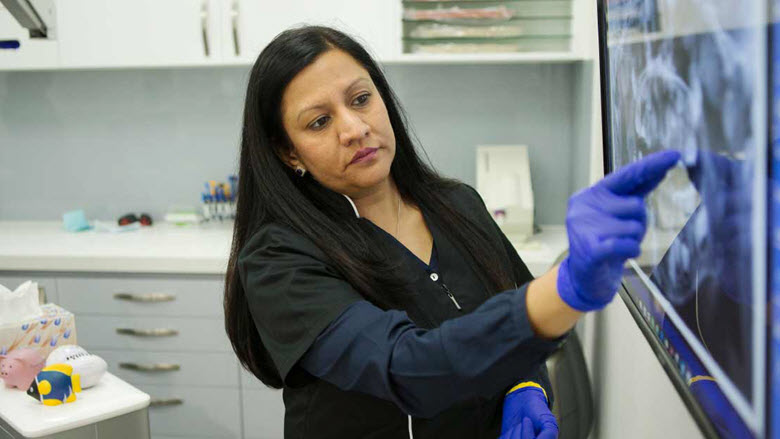While almost three in four healthcare businesses claim to be innovating, only 31 per cent have met the international standard for innovation developed by the OECD, according to the CommBank Business Insights Report: Healthcare.
Under the guidelines outlined in the OECD’s Oslo Manual, innovation is defined as introducing something new or making a significant improvement in one or more of four areas: business processes, products and services, organisational structure, and marketing practices.
When the claimed innovations of Healthcare organisations were evaluated, 42 per cent of businesses did not reach this threshold for genuine innovation, however, were still found to be improving. A further 27 per cent of Healthcare businesses were not innovating at all or had abandoned their plans.
Cameron Ziebell, National Head of Healthcare, Commonwealth Bank, said, “While technology continues to underpin global ground-breaking advancements in areas such as e-health, telehealth and precision medicine, most Australian healthcare businesses are yet to truly take advantage of true innovation.
“With nearly one in three Healthcare businesses now innovating, and an even larger proportion adopting improvement, there’s a strong foundation for the whole industry to move further up the innovation curve and drive better operational and financial outcomes.”
Successfully innovating Healthcare businesses reported a significant financial return on their activity, estimating an average increase in earnings of $329,000 per business through higher revenue or cost savings. When applied to the same proportion of Healthcare businesses across Australia, this suggests that industry-wide innovation has contributed approximately $3 billion to the economy.
Improving the customer experience was the top expected benefit amongst truly innovative Healthcare businesses (71 per cent), followed by revenue growth, which was an expected improvement for the majority of business (57 per cent).
The report also gauges 15 key drivers of innovation across management capabilities and entrepreneurial behaviours to produce the CommBank Innovation Index. The Healthcare industry achieved an Index score of 10.6, significantly below both the national average across all industries of 24.0, and the overall benchmark for genuine innovation of 25.0.
Innovation active businesses shared common characteristics across the 15 components. This includes encouraging employees to ask questions that challenge the current way of doing things (46 per cent), employing staff that are not afraid to take risks and fail (32 per cent) and expecting staff to offer creative ideas (31 per cent).
Healthcare businesses are also almost three times more likely than the average Australian business to equate innovation with technology (11 per cent), with the largest proportion of businesses drawing the parallel between innovation and new products and processes (44 per cent).
“The value can manifest in many ways beyond earnings growth. Improving the efficiency of the businesses and providing a superior customer experience can also deliver strong financial benefits,” Mr Ziebell said.
“The Healthcare industry is rapidly changing, driven by a growing expectation amongst consumers in the delivery and outcomes of Healthcare services. Many businesses are well on their way to becoming true innovators to keep pace with this change to remain competitive.”
ENDS
Notes to editors
Using the guidelines for innovation outlined in the OECD’s Oslo Manual, the report defines innovation as a new or significant improvement in one of the following four areas – products and services, business processes, organisational methods and marketing practices.
Case studies of innovative healthcare businesses
Thomas Holt, an aged care provider, is leveraging the latest global trends in research and development, technology, and using partnerships to ensure innovation remains a key driver of its primary objective – to provide an amazing life for its residents.
Alexandra Zammitt, Chief Executive Officer, Thomas Holt said: “The potential for technology to improve service delivery has led us to rethink our operating model, and align with the changing expectations of our clients and their families.”
“This is where technology can make the biggest impact, because it frees up our staff to focus on the client. No matter how good robotics or artificial intelligence is, it won’t replace one-on-one care.”
Chris O’Brien Lifehouse is housed within an internationally awarded building, housing all relevant specialist under one roof for a more coordinated approach to patient cancer treatment, The hospital is also at the forefront of engaging the latest technology, and uses some of the most advanced surgical hardware in the world.
Eileen Hannagan, Chief Executive Officer, Chris O’Brien Lifehouse said: “Investing in the technology isn’t about having the latest gadgetry, we are always open to exploring new technologies but only when it can clearly deliver better patient outcomes.”
“We have really focused on creating a culture that supports and gives permission to a different type of thinking in healthcare - an openness to change and trying new things while operating within clinical boundaries.”
“Our approach to cancer treatment will always be science-based but it’s a question of being open to new ideas and ways of thinking so we can fully discover where the science can take us.”
About the Business Insights Report: Healthcare
The CommBank Business Insights Report: Healthcare is based on a quantitative survey of 146 businesses within the Healthcare and Social Assistance sector with an annual turnover of over $500,000 and at least two employees. The survey was designed to benchmark the innovation performance of each business, identifying the key motivations and drivers, and highlighting best practice. The survey was conducted on behalf of the Commonwealth Bank by DBM Consultants between August and September 2016.
The full report is available here.



